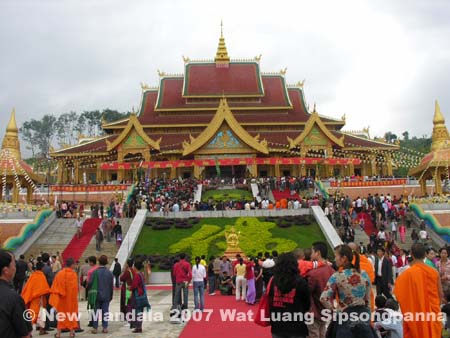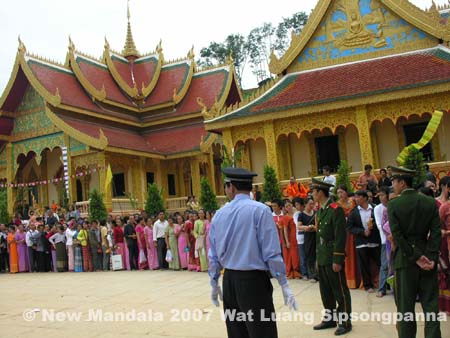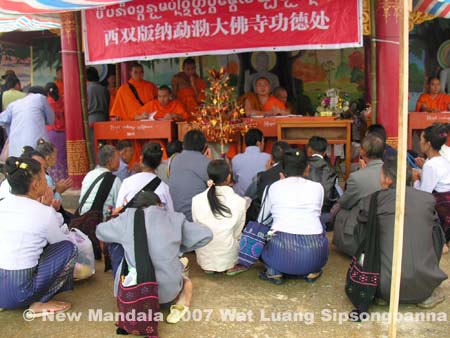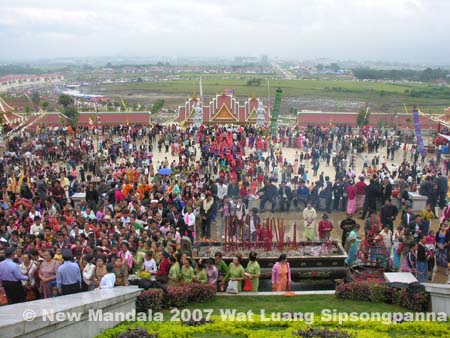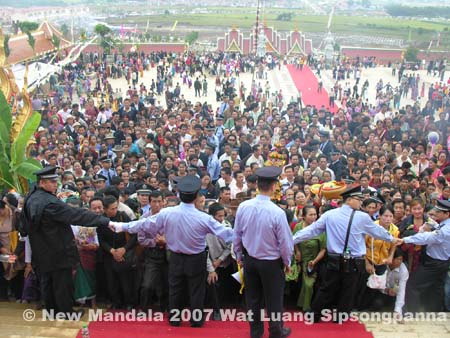Some of New Mandala readers and contributors may be familiar with an article by Grant Evans entitled “Transformation of Jinghong, Xishuangbanna, PRC” and included in the book Where China meets Southeast Asia (ISEAS, 2000). In that article, Evans referred to various tourist projects planned to be carried out in Jinghong, the capital of the Xishuangbanna Dai Autonomous Prefecture, projects supported by local authorities and based on features taken from what is supposedly traditional Lue culture.
Since the 1990s, these projects have evolved into what seems now more like a compromise between tourist industry demands and the development of Buddhist education in the region: a huge temple compound located outside Jinghong City (not far from the place where the palace of the last Chao Paendin used to stand), and which will house the regional Buddhist school.
On November 3, the ceremony of inauguration of the main vihaan (ordination hall) of the new Wat Luang Sipsongpanna (the original, Lue name for Xishuangbanna), also known in Chinese as “Southern Theravada Culture Center”, took place. Several senior monks belonging to the Theravada, Tibetan and Han Chinese traditions took part in the short chanting ceremony which consecrated the vihaan, organized by the local Buddhist Association and attended by local authorities.
Access during that first day was restricted, and it wasn┬┤t until November 4 and after that the Lue commoners were allowed to enter the temple in masse to make offerings. As several thousands of locals turned out to visit the site during the following days, local police had to limit access to the ordination hall and other areas of the temple. An entrance fee of 80 RMB (slightly more than 10 USD) will be charged to non-Lue visitors from now on.
The new temple-school-tourist spot is being built mainly with funds from a real estate company located in Liaoning province (Northeast China), which will run bussines within the complex for more than 50 years. The project is thus mainly conceived by local authorities and entrepreneurs as an investment to boost tourism in the region. Apart from the ordination hall, a big Buddha image (in the Thai walking-Buddha style) and a stupa are planned to be built behind the ordination hall and up the hill.
 Facebook
Facebook  Twitter
Twitter  Soundcloud
Soundcloud  Youtube
Youtube  Rss
Rss 